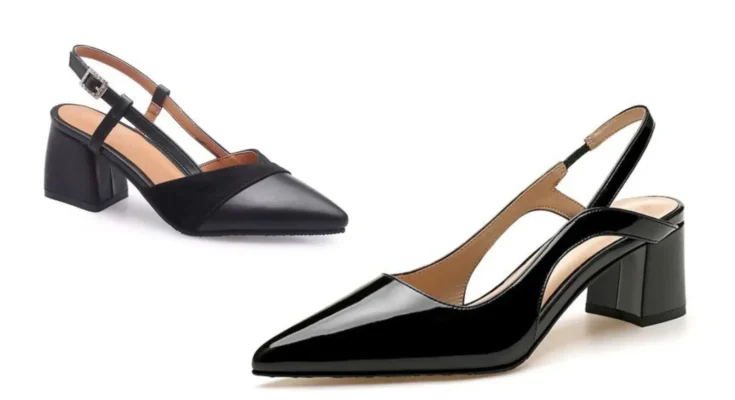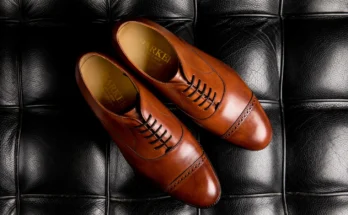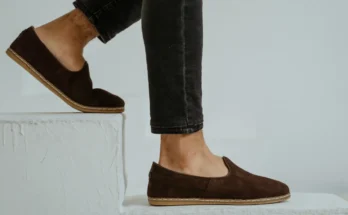Heels shopping can be daunting, especially when it comes to heels. With so many options, how do you know which heels will keep you comfortable and supported all day? We have covered the most comfortable type of heels that hurt the least. So Let’s Start…
Block Heels:
These heels have a chunky, solid heel that provides more stability and support compared to stiletto heels. They’re great for everyday wear because they offer comfort without sacrificing style. You can find block heels in various heights and styles, making them versatile for different occasions.
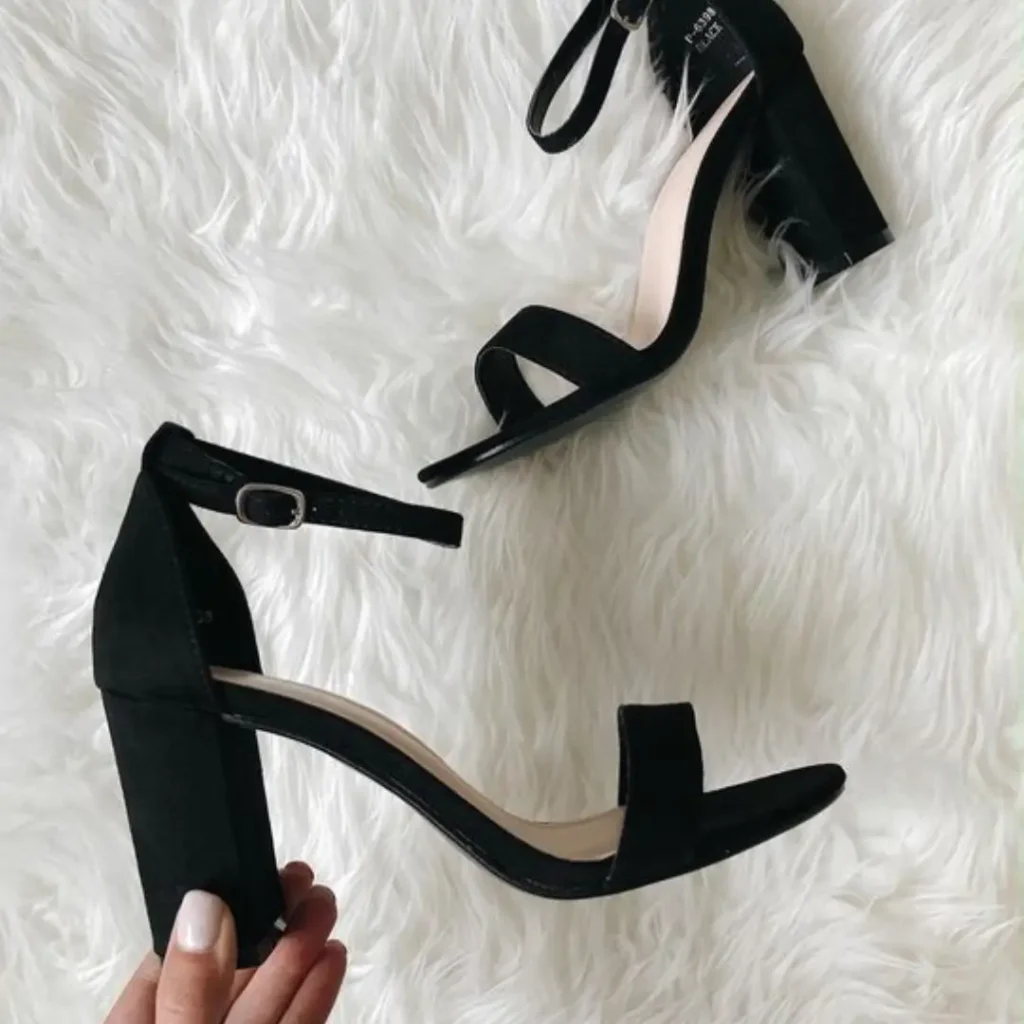
Pros: Stability, comfort, versatility.
Cons: Bulkiness, limited aesthetic for formal events.
Wedges:
Wedges have a heel that runs under the entire shoe, providing more surface area for stability. They distribute your weight more evenly, making them easier to walk in compared to traditional heels. Wedges come in various heights and designs, from casual espadrilles to elegant evening sandals.
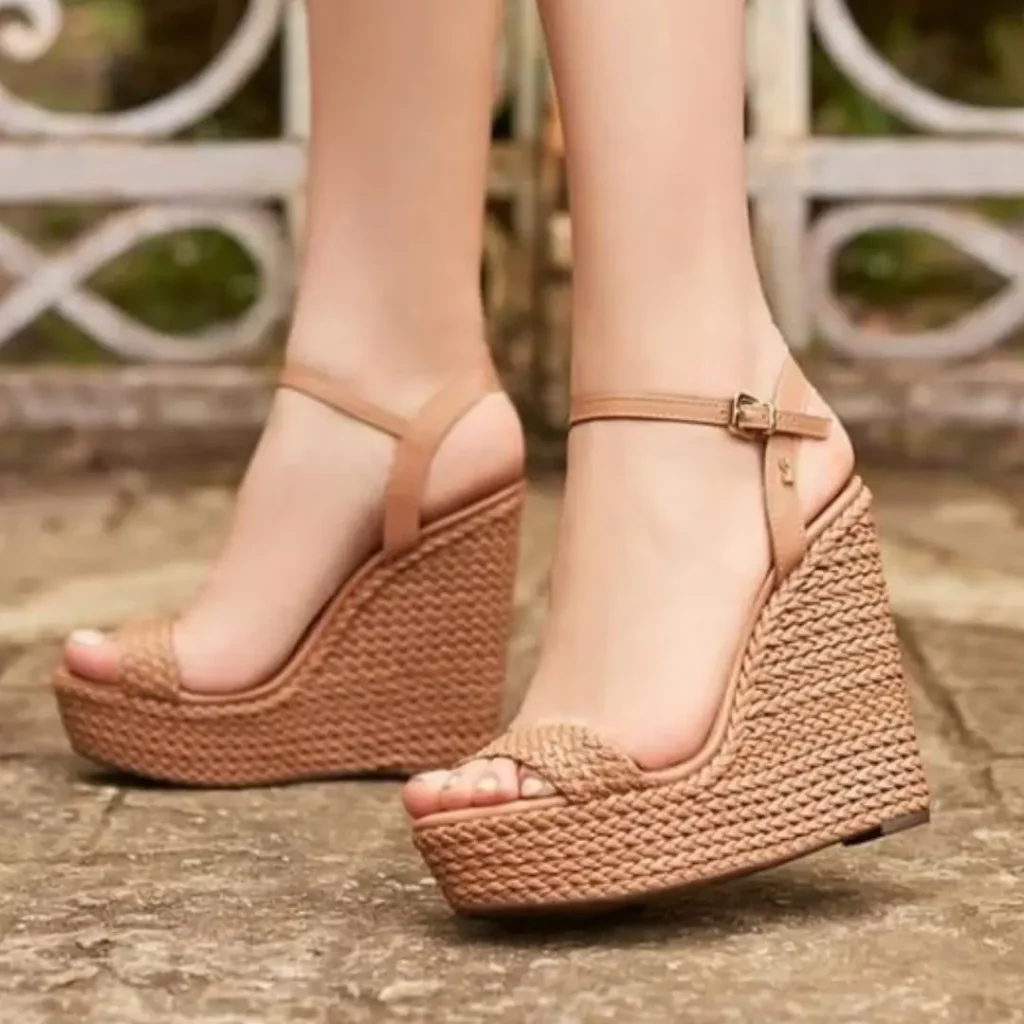
Pros: Stability, comfort, versatility.
Cons: Weight, limited height options.
Low Pump Heels:
Low pump heels, also known as kitten heels, have short, slender heels usually ranging from 1 to 2 inches in height. They offer a slight lift without putting too much strain on your feet, making them perfect for all-day wear. Low-pump heels are often seen in classic styles like pointed toes or rounded toes, suitable for both professional and casual settings.
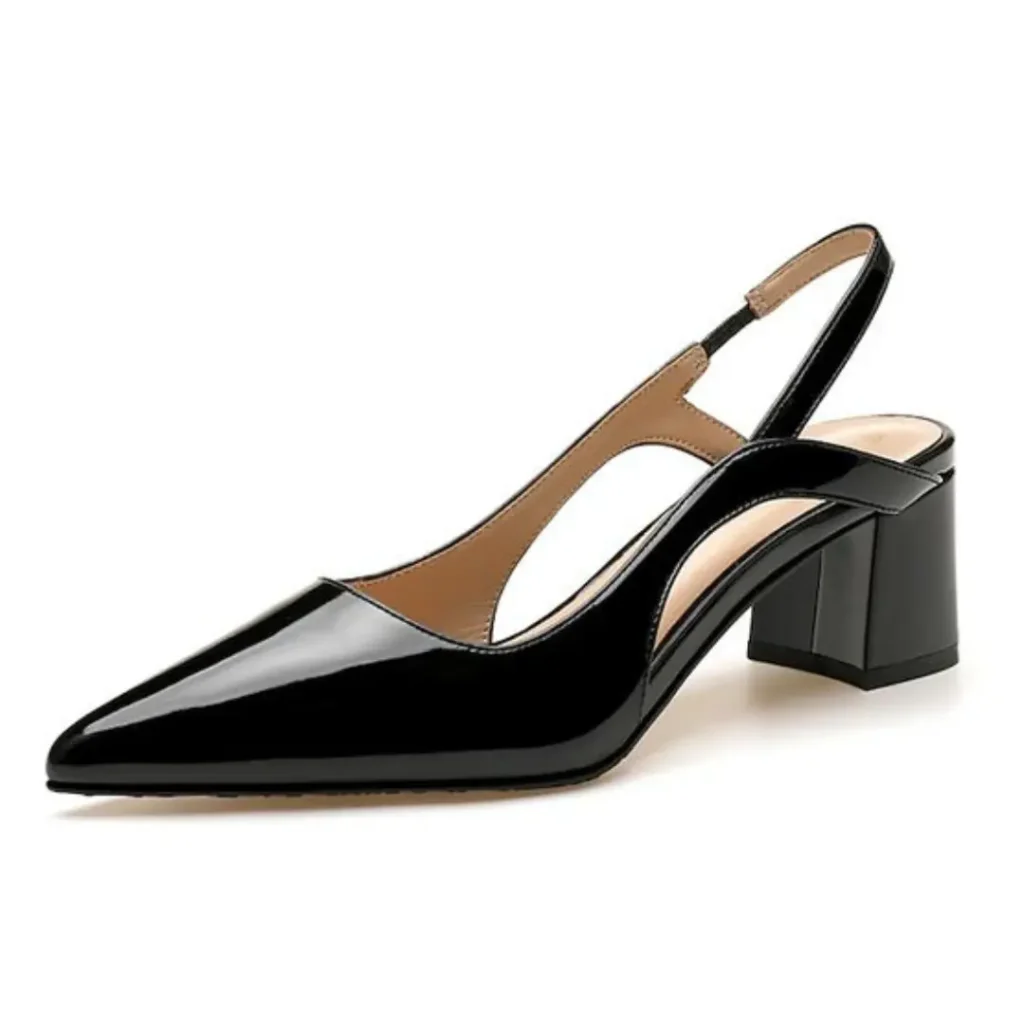
Pros: Comfort, elegance, versatility.
Cons: Limited height, less dramatic effect.
Platform Heels:
Platform heels have a thick sole under the toe area, which elevates the front of the foot, creating a more gradual incline from the toe to the heel. This design reduces the angle of your foot, providing extra comfort and stability. Platform heels can add height without the discomfort of high arches, making them a popular choice for long events or nights out.
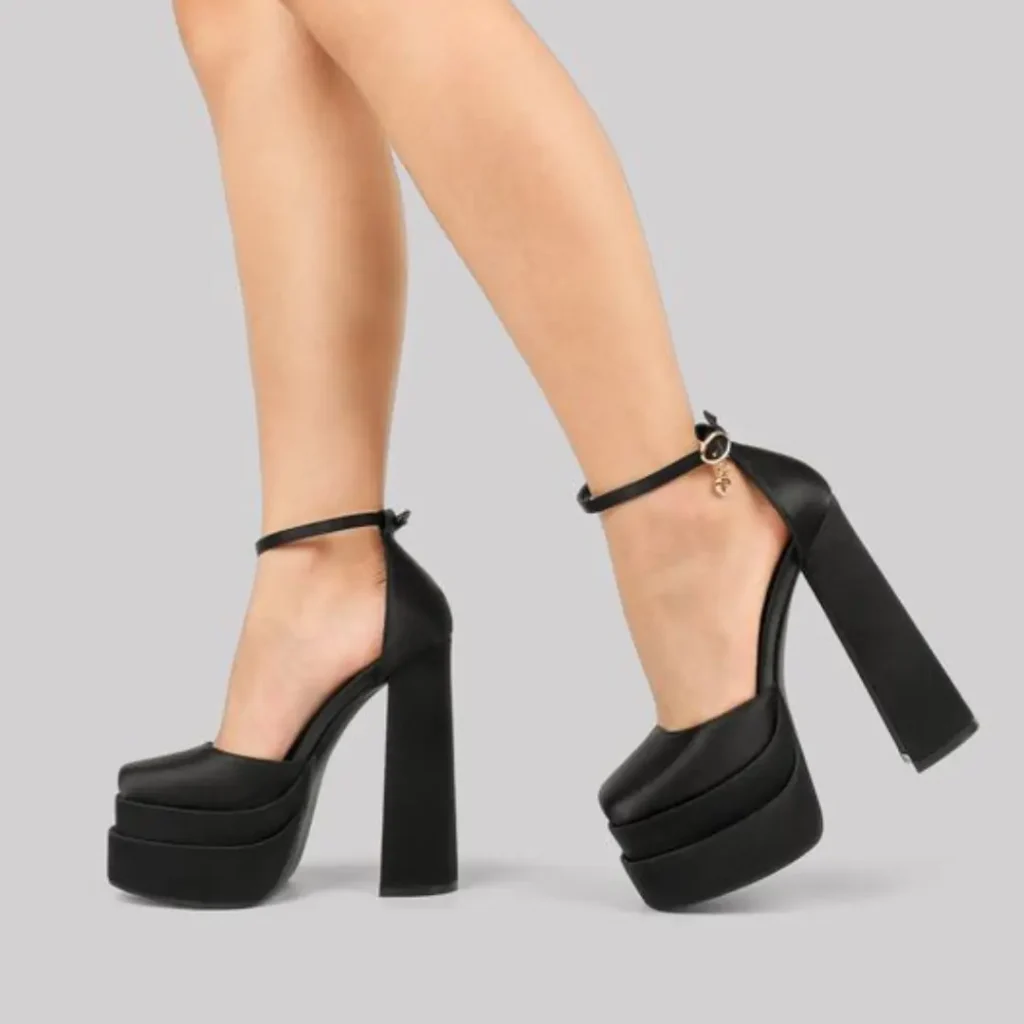
Pros: Height without discomfort, stability, fashion statement.
Cons: Bulkiness, limited versatility.
Kitten Heels:
Kitten heels are characterized by their short, slender heels typically measuring 1.5 to 2 inches in height. They offer a touch of elevation while maintaining a comfortable and practical design. Kitten heels are perfect for occasions where you want a bit of height without the discomfort of higher heels. They come in various styles, including pumps, sandals, and boots, making them versatile for different outfits and occasions.
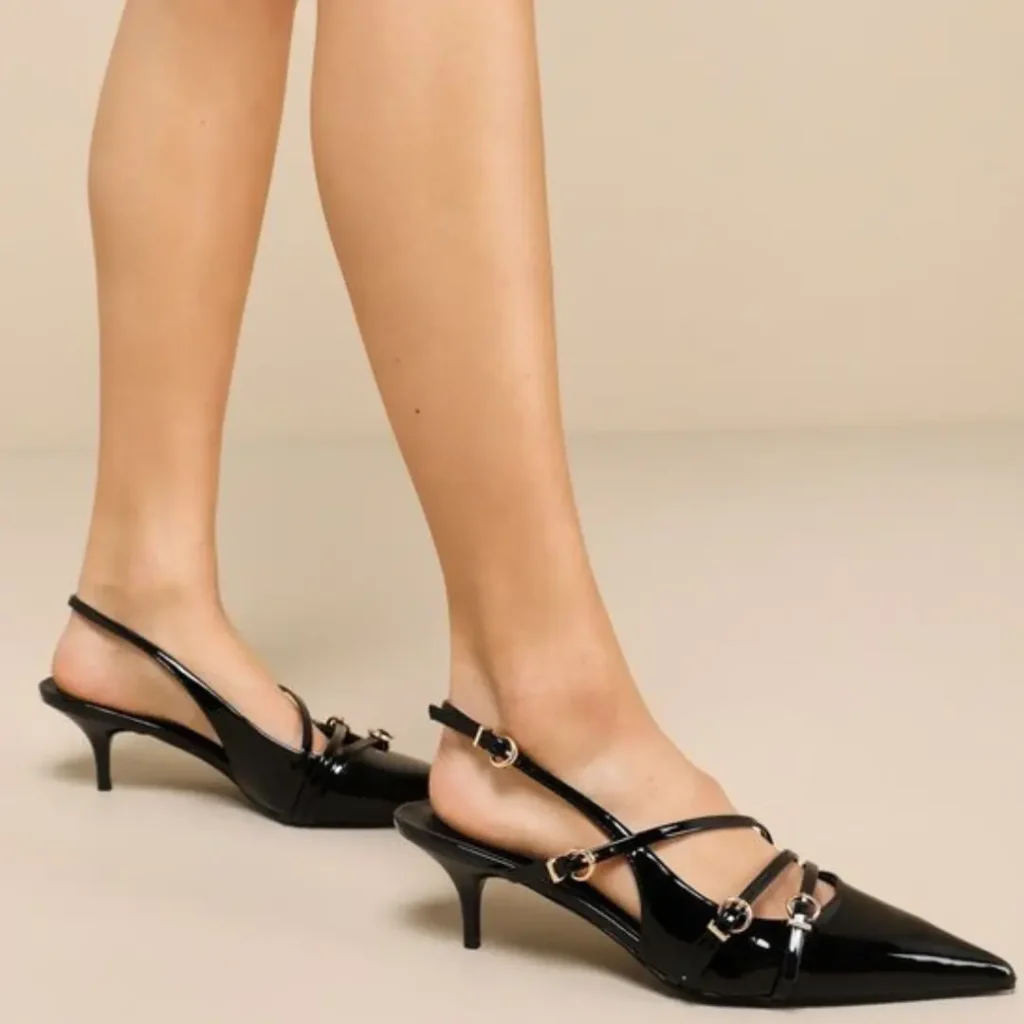
Pros: Comfort, versatility, classic elegance.
Cons: Limited height, less dramatic effect.
How to Walk Comfortably in High Heels for Beginners?
Walking gracefully in high heels takes some practice, but with a few tips and the right shoes, beginners can master stylish stilettos. Follow this guide on your high-heel journey from wobbly to runway-ready.
How to Choose the Right Heel Height and Style for You?
Opt for styles 2-3 inches high when starting in heels. Thin stiletto heels are more complex than chunky block heels.
Look for heels with the following:
- Wide, supportive base
- Thick heels 2-3 inches high
- Cushioned insole
- Straps across the instep or ankle
Avoid spindly stilettos and ultra-high heels for now. Build up your height as your skills progress.
Wear the Right Size High Heel
Ill-fitting heels lead to pain and accidents.
- Heels should fit snugly without pinch points.
- Feet shouldn’t slide forward in shoes.
- Measure both feet and buy the larger size.
- Shop for heels later in the day when your feet are most swollen.
Wearing appropriately sized heels prevents blisters, cramps, and other discomfort.
Practice Walking at Home First
Before taking new heels out in public:
- Wear them around the house with padded socks.
- Start in carpeted areas to learn balance.
- Take slow steps by placing your weight on the ball of your foot.
- Keep knees soft, and posture upright but relaxed.
- Hold your arms out at first for stability.
- Wear heels for short periods, building up the duration.
You’re ready for the sidewalk once you can walk and turn smoothly at home!
Mind Your Step Out in the Real World
Navigating the outside world in heels takes extra caution.
- Walk on flat, even surfaces initially. Avoid cobblestones.
- Go slow on the stairs, gripping the railing.
- Plant your heels first when walking downhill.
- Cross legs and walk toe-to-heel on inclines.
- Watch for cracks and debris; don’t trip!
Take it easy as you gain confidence walking in varied real-world conditions.
Last Tips for Happy Feet
Finally, follow these tips to stay comfortable in your heels:
- Bring flats for backup if your heels start to hurt.
- Massage the feet and stretch the calves after wear.
- Apply moisturizer to prevent cracked heels.
- Consider inserts or pads for extra cushioning.
- Keep your posture upright to minimize strain.
It takes some time to get into the rhythm of heels. But with the right shoes and a few fundamental techniques, you’ll walk with grace and style in no time!
Are luxury heels more comfortable?
Luxury heels can offer improved comfort compared to lower-quality options due to higher-quality materials, better design, and enhanced cushioning. While ease can vary between brands and styles, luxury heels often prioritize style and ergonomic features, providing a more comfortable wearing experience for those willing to invest in them.
How do you wear heels without pain?
To wear heels without pain:
- Consider choosing heels with lower heights and thicker heels for better stability.
- Opt for cushioned insoles or gel inserts for added comfort.
- Make sure the shoes fit well and aren’t too tight.
- Practice walking in heels before wearing them for extended periods, and try to take breaks to rest your feet.
Stretching your feet and calf muscles before and after wearing comfortable heels can also help. Gradually increasing your time in heels can help your feet adjust more comfortably over time.
How do celebrities wear heels all the time?
Celebrities often wear heels for extended periods using a combination of strategies. They usually have access to custom-made, high-quality shoes that prioritize both style and comfort. Celebrities may choose lower heel heights, padded insoles, and shoes with supportive features. Regular foot massages, stretching exercises, and alternating heel heights help reduce discomfort.
What type of heels hurt the least?
Low-heeled shoes, such as kitten heels or block heels, typically hurt the least because they put less strain on your feet and distribute your weight more evenly. Additionally, heels with cushioned insoles and adjustable straps can provide added comfort.
How do I choose the most comfortable heels?
To choose the most comfortable heels, consider factors such as heel height, shoe width, cushioning, and arch support. Opt for shoes with lower heels and ample padding in the insole. Look for styles with straps or slingbacks to help secure your foot and reduce slippage.
What heels are comfy to walk in?
Wedge heels and block heels are often comfortable to walk in because they offer more stability and support than stiletto heels. Look for heels with a wider base and cushioned insoles for added comfort. Additionally, shoes with platforms can help reduce the angle of your foot, making them more comfortable for extended wear.

